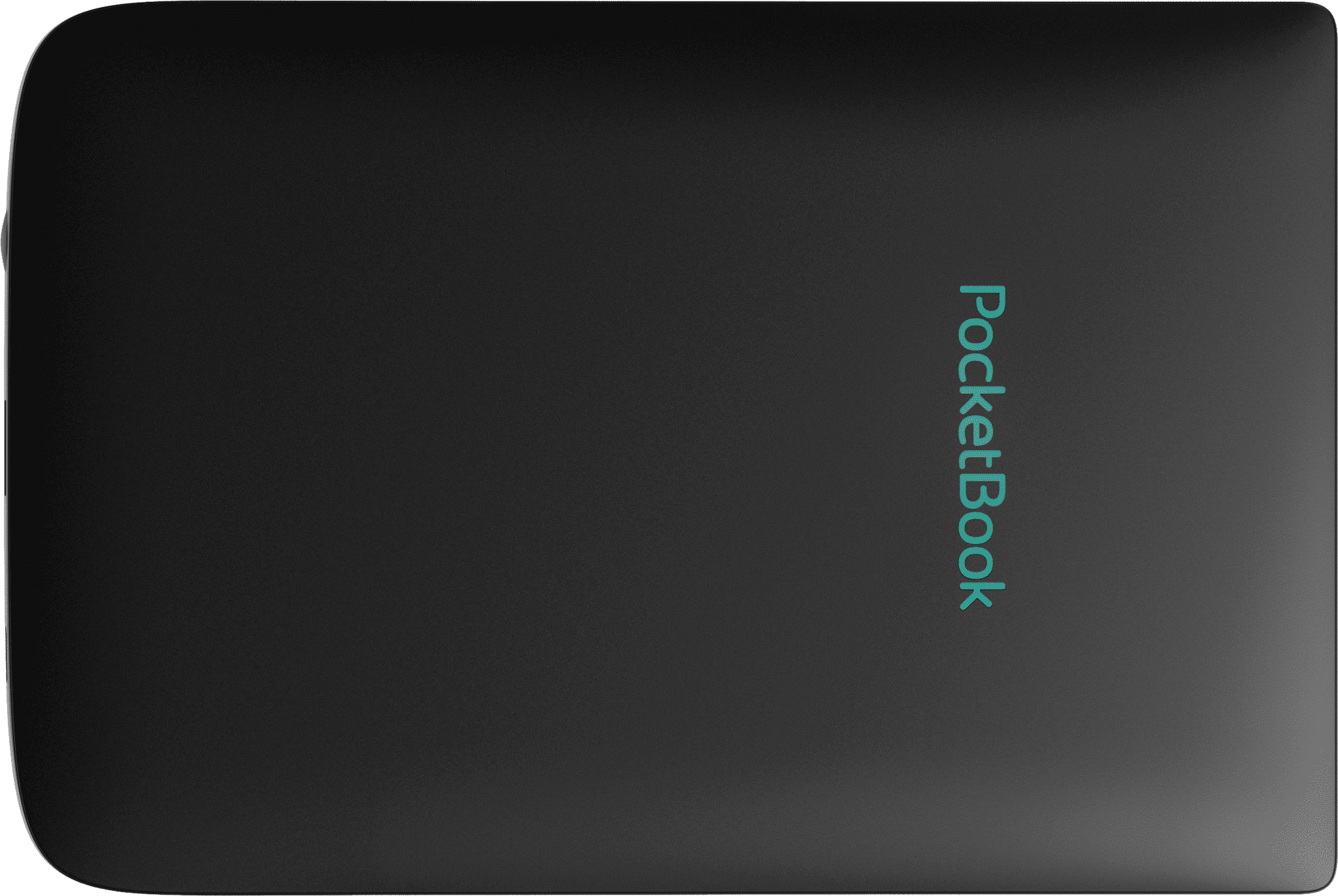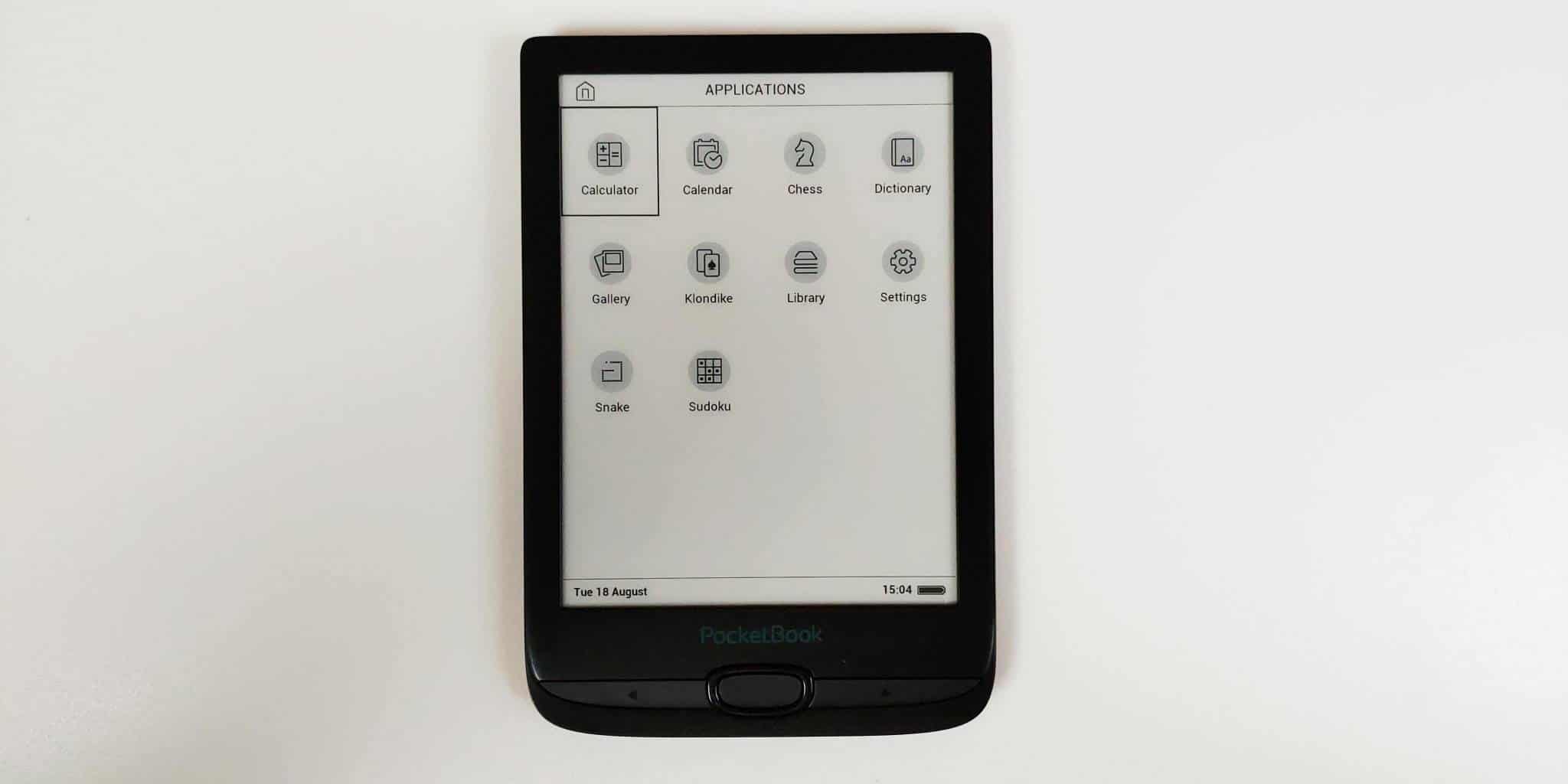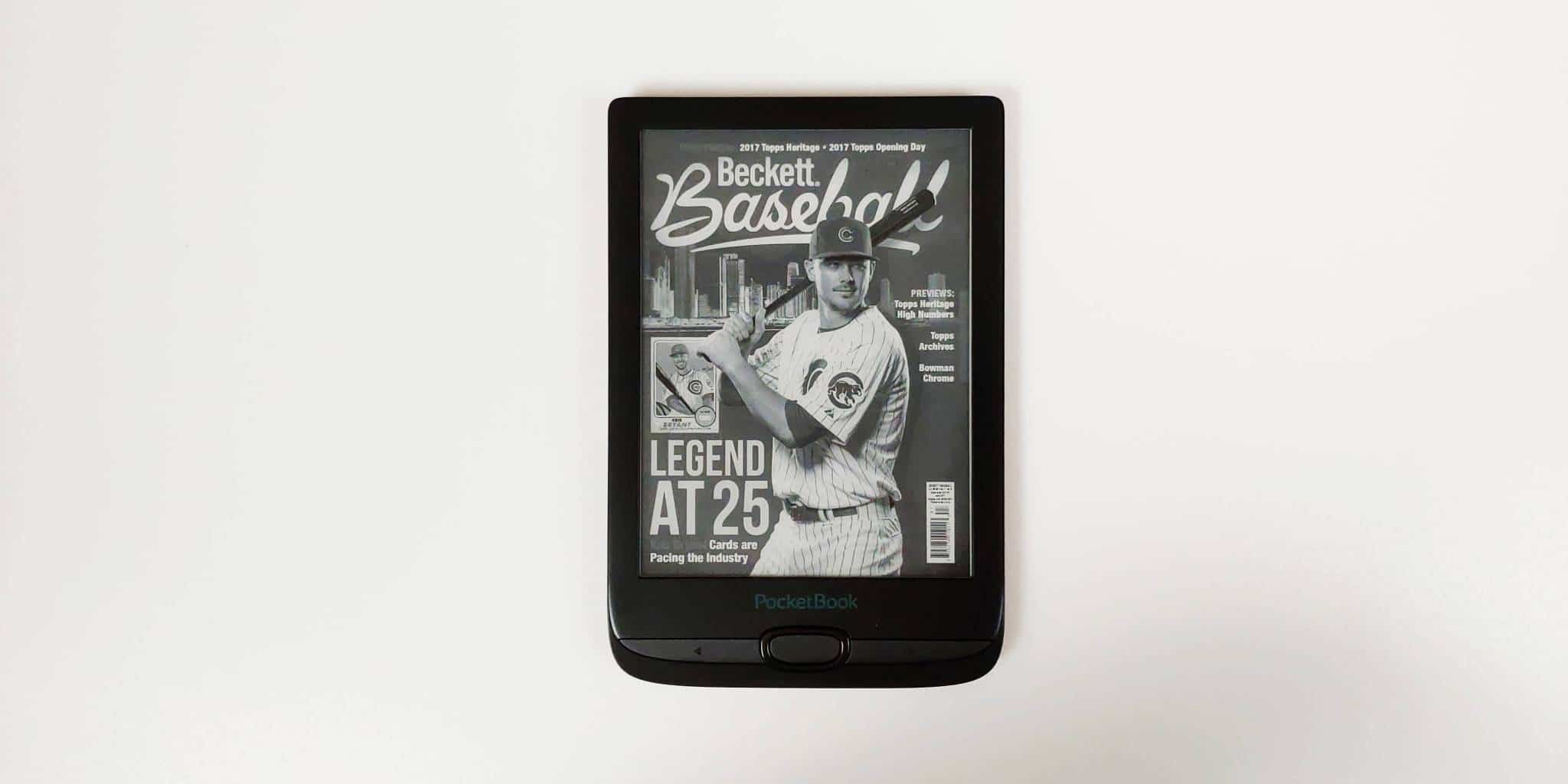
The Pocketbook Basic series of e-readers are entry level and tend to retail for around $80, making them very affordable. The brand new Basic 4 is no different and the main selling features is the HD screen, SD card and lots of physical buttons.
Hardware

The Pocketbook Basic 4 features a six inch E INK Carta HD display and a resolution of 1024×758 and 212 PPI. This device does not have a touchscreen and a front-lit display, so you won’t be able to read at night. The screen is sunken with the bezel and a plastic layer on top of the E INK screen, so you will actually get a better reading experience.

The color scheme of the e-reader is black. The pocketbook logo is green and is right below the screen. The home button is at the very bottom of the device and the overall design is quite different than the Pocketbook Color or the Touch Lux 5. Instead of being a square, it rounded and it is contained by a little boarder around it. This is not just for design aesthetics, the border is basically four independent buttons, that act as a D-Pad to navigate around the device and the center button is an OK button. This is used to navigate between the sub-menus, which include Library, Dictionary, Applications and settings. Surrounding this main button are two manual page turn keys, that are very large.

Underneath the hood is a Freescale 1GZ processor, 256MB of RAM, 8GB of storage and has an SD card that is capable of up to 32GB of additional storage. Pocketbook has elected to use a Micro USB port for charging and transferring data, instead of USB-C. It is powered by a 800mAh battery, which should be good for a couple of weeks, before you have to recharge it. You can get firmware updates via WIFI. The dimensions are 161.3 × 108 × 8 mm and it weighs a paltry 145g.
I have noticed that the Pocketbook Basic 4 got lost in the shuffle between the highly successful Pocketbook Color, which is the 2nd attempt at a full color e-reader, using the latest E INK technology. The Pocketbook Touch Lux 5 also stole some of its limelight, since both of these e-readers came out before the Basic 4. I think the Basic 4 might experience a sales increase as we get closer to the holiday season, many people might buy it a a gift for someone new to e-readers, which is what this is really designed for.
Software

The Pocketbook software is based on Linux the company uses the same OS on every single one of their e-readers, they have not really done a serious software revision in close to a decade, although they do develop new apps and software functionality.
The homescreen for the Basic 4 is quite different, it merely shows you the last 4-5 books that you are in the process of reading, or have been recently sideloaded. Underneath that is a link to the library and lists the total amount of books that are in it.
The settings menu is where you can select what language you want the UI in, there are around 30 different languages that are supported. You can establish your WIFI connection, time zone, search for a firmware update.
The library menu looks really good, there is a list or grid view to showcase your collection. Grid will show your cover art and will only show a few books per page, list will condense it and show more content. You can use the D-Pad to select a book and open it.

When you open an ebook for the first time, this is where the Basic 4 really shines. You can use the oversized page turn buttons to quickly turn to the next page. If you tap the center button while in the book, it will open up a menu. You can search, make a bookmark, goto a specific page, access the TOC, close the book, rotate from portrait mode to landscape, via a software based gyroscope, make a note, access the dictionary or the settings. Settings are important here, this is where you can select the size of the font, changes are made via a slider bar. You can also augment the margins and line spacing and turn off the status bar and page numbering system if you want. Page turns are lightning quick.
There are 14 supported ebook formats such as PDF, PDF(DRM), EPUB, EPUB(DRM), DJVU, FB2, FB2.ZIP, DOC, DOCX, RTF, PRC, TXT, CHM, HTM, HTML, MOBI. In the settings menu you can login to your ADOBE account so you can enable DRM ebooks. This is useful if you want to borrow ebooks from the public library and use Adobe Digital Editions to transfer the ebooks to your device.

The dictionary by default is the Webster 1913 Dictionary and searching is not enjoyable, this is the same system if you want to make a note in an ebook. The keyboard is not T9, QWERTY or even ABC, it is really different and it is agonizing to use. You have to use the D-Pad to scroll to every character, click OK, and keep on doing it. There is no predictive text, which would have been really useful here.

The settings menu basically has around 6 different games and there are shortcuts to your library and the settings menu. There are no Pocketbook services on this e-reader, such as Send to Pocketbook, where you can send blog and news articles to your e-reader, no Dropbox accessibility or a digital bookstore. You basically have to sideload in any manga, ebooks, PDF files or any other content via the Micro USB cable and drag and drop stuff via Windows Explorer or Calibre.
Wrap up

This is a simple, barebones e-reader with none of the frills and options as all of the other e-readers in Pocketbooks modern portfolio. There are a small minority of people who don’t like touch screens for whatever reason, or use their e-reader while wearing gloves or mittens, due to the cold weather. Clicking on big oversized page turn buttons can be used in this manner.
The Basic 4 has a really good design, but doing any kind of typing is utterly terrible, I would recommend this as just a dedicated e-reader to people who don’t want any frills and want to sideload in everything.
Michael Kozlowski is the editor-in-chief at Good e-Reader and has written about audiobooks and e-readers for the past fifteen years. Newspapers and websites such as the CBC, CNET, Engadget, Huffington Post and the New York Times have picked up his articles. He Lives in Vancouver, British Columbia, Canada.
